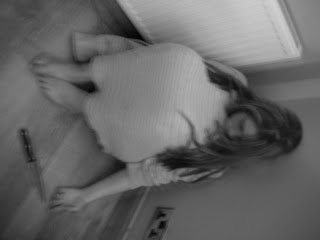Children of Men, released in 2006 and directed by Alfonso Cuarón shows our world very differently to how we know it. In the opening sequence, it is evidential that it is a futuristic film set in ‘2027’ by the use of repeated hints such as the voice over of the current news, the visual footage of the news and in case we miss that, text on the bottom of the screen displaying the date! This information is clearly vital to the understanding of the film.
The genre of the film being mystery and drama again is immediately portrayed, this time through the use of dark colours in the general setting, and other aspects of MES such as what we as an audience learn through the voiceover but mainly through the actual content of the opening sequence; for example the selection of what are meant to be ‘normal’ people are all dressed very similarly in dull and gloomy clothing, and the way in which they react to the situation being presented by the news, (shown through the sea of shocked facial expressions, crying and devastated body language), encourages the audience to question what is going on and in fact make us want to watch more which after all is the primary purpose of an opening sequence – to keep the viewer intrigued.
It is obvious who the main character is as he straight away stands out from the crowd of faces, this is because a well known actor has been used to play him (Clive Owen) and also due to him being less stunned by the news than everyone else in the scene and appears to be ‘different’ in comparison to the sheep-like, sad people surrounding him which connects with the audience for two main reasons. One, it almost creates a sense of comforting and familiarity as we no longer feel like an outsider looking in on these strange circumstances but also because we feel we can follow this character through his chaotic journey that will answer the questions we originally conceived.
As he carries out a task we presume is part of his everyday routine of getting coffee, the camera follows him exiting in a hand held manor. During this we see many things that represent what the time period and the location of the film is like, such as the use of motorised passenger bikes on the street, moving images as advertisements on the sides on buses, both suggesting big changes in terms of technology, the business of the location which is central London, almost relating to the audience as a current Japan or China ambience, but also the dirtiness of the streets and not a wink of sunlight as if the equilibrium of the world had been broken. The camera moves in a way to allow us to see these factors as again they are significant. The camera is then positioned for a few seconds facing Owen from the side so it is in full view of the explosion that shortly takes place, still remaining hand held and then directly after the explosion quickly goes towards the action to capture the not at all disturbing image of a woman waddling out the cafe Owen were just in missing an arm.
Use of sound in this extract is essential for the effect of the loud explosion and following screaming enabling it to seem more realistic and hectic, as well as the voiceover being off scene for a while and then on screen diagetic sound when the television is displayed. The narrative functions are quite simple the film starts at the present day of the story and proceeds onwards from there revealing more horrid truths about how the director perceives the future!
To conclude I believe the opening sequence Children of Men effectively used the forms and conventions of a film opening as I have demonstrated in my essay. Personally, I as a viewer enjoyed the extract as it was different and interesting, and definitely made me want to watch on. So much so that I am investing in a copy of my own so I can watch the rest of the film and find out how it ends!












